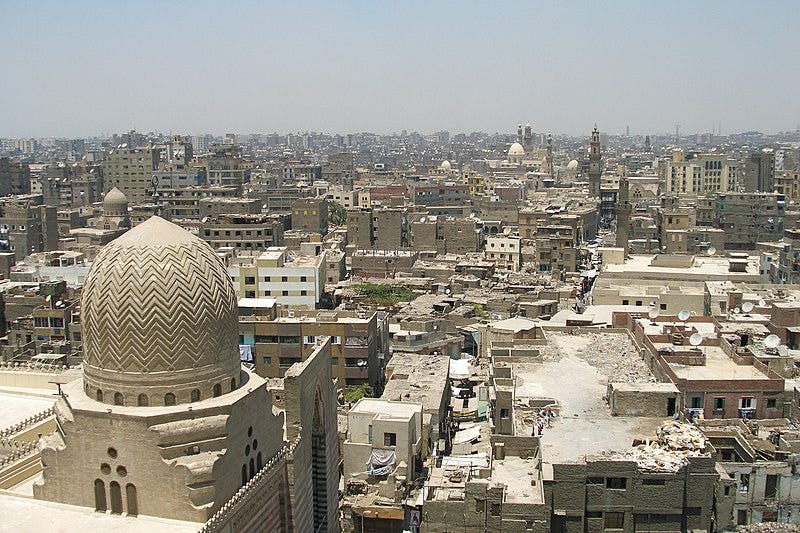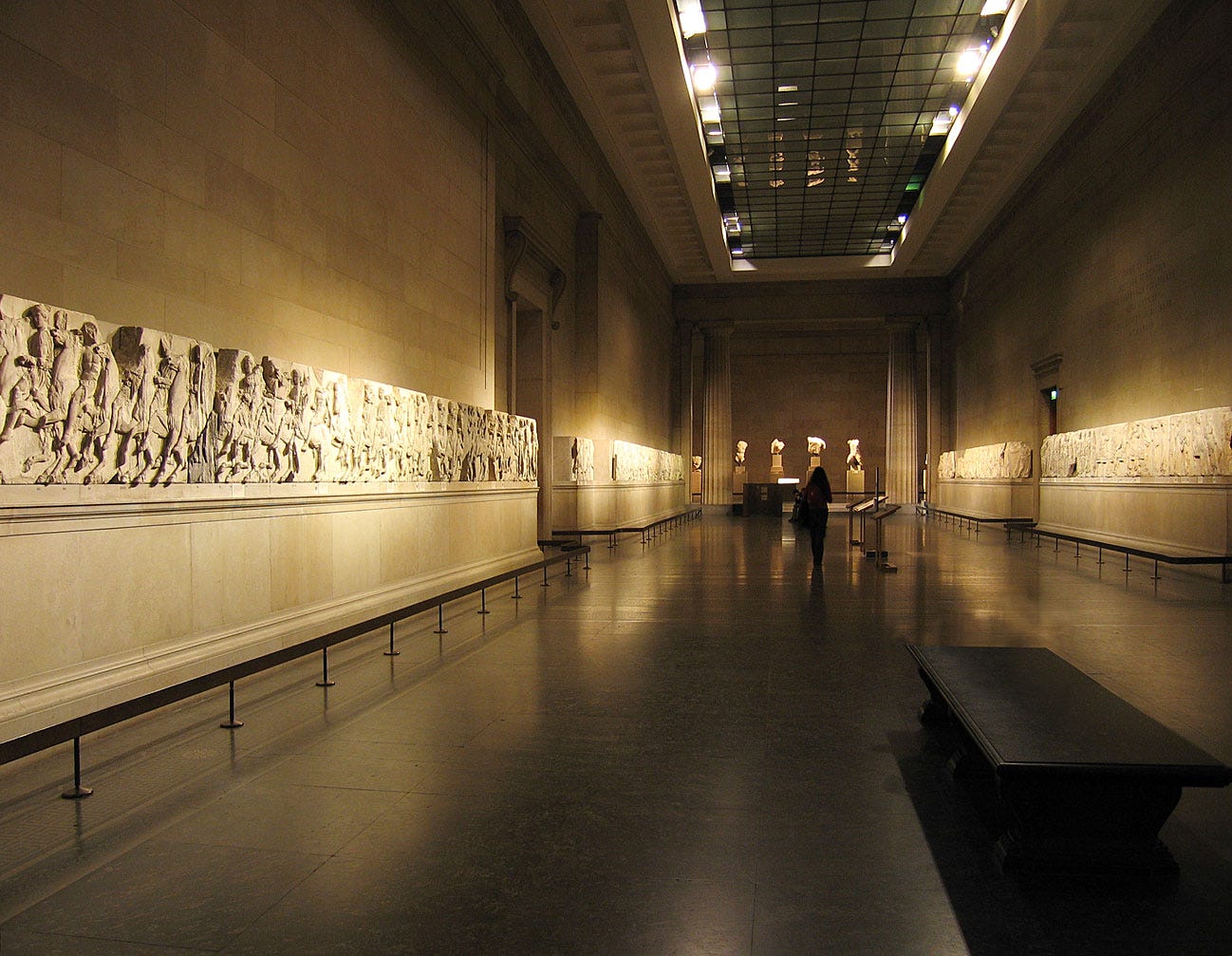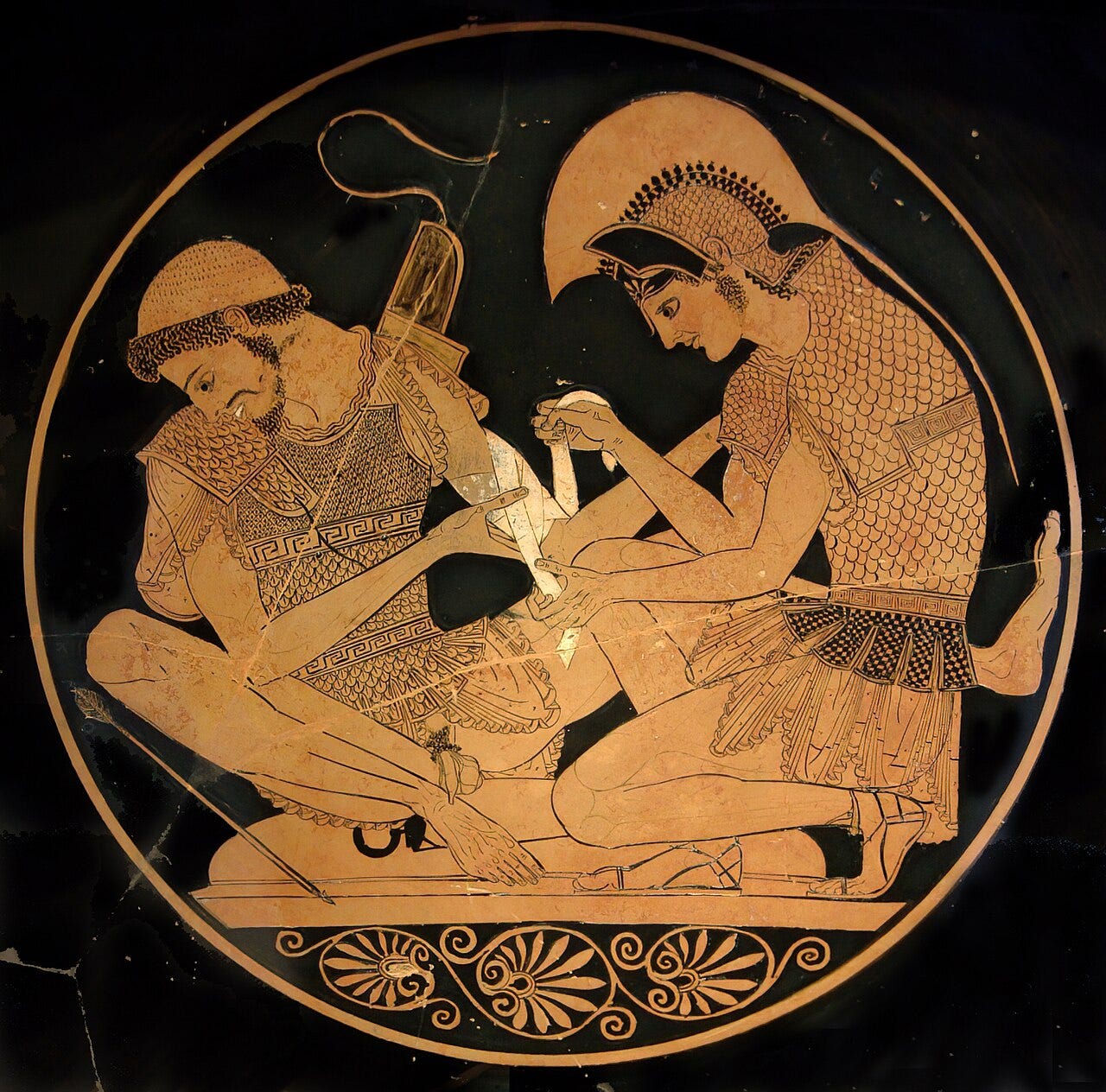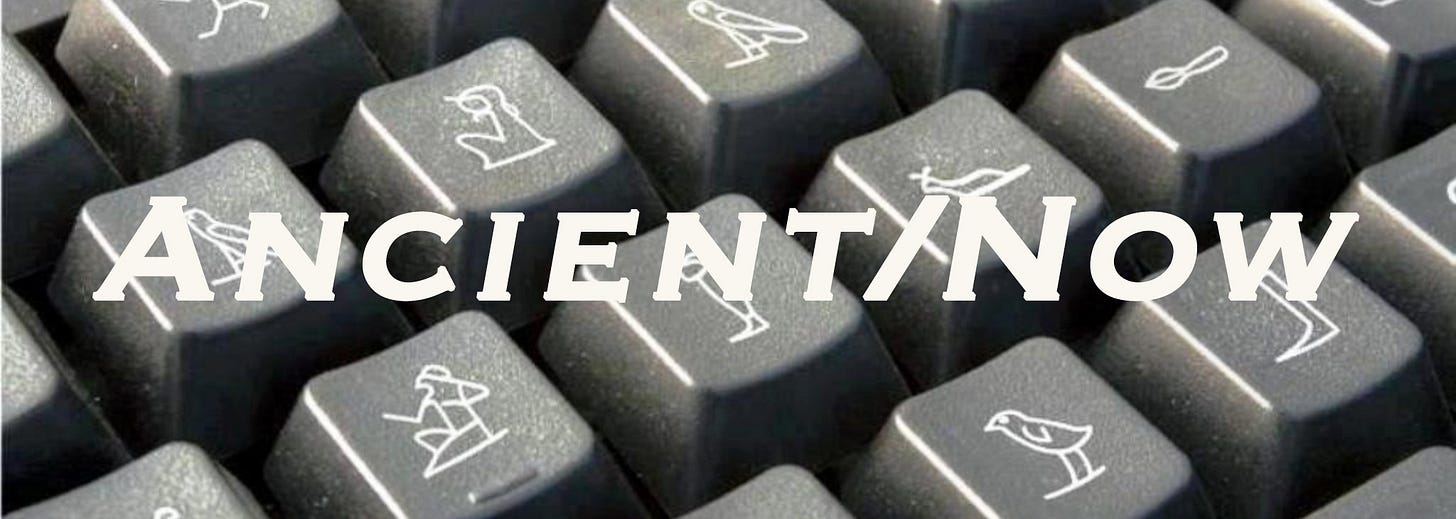Ancient/Now - September 6th
Demolishing Cairo in the name of progress, theft scandal and resignation at the British Museum, differing translations of Homer's "Iliad" and more
Razing Cairo in the name of modernization

The el-Sisi government in Egypt continues to demolish cultural and archaeological sites in and around Cairo in the name of progress and modernization (feeding the rich, essentially, just like we do in the United States). Look around on the news and on social media, and you’ll find a gazillion stories and personal accounts about what has been demolished. Historic and iconic sights around Cairo are disappearing, including contemporary art and culture spaces, cemeteries, gardens, trees, historic Islamic sites like Qusun mosque and much of the City of the Dead, and even ancient sites like the causeway of Djedefre’s pyramid at Abu Rawash. Egypt’s government is changing Cairo so fast, Google maps cannot possibly keep up. The Twitter feed of Hussein A H Omar highlights the destruction of mausoleums in particular, including those of his family. The push for development at the cost of historical sites has also reached Luxor in the south, where parts of the 120-year-old palace of Tawfiq Pasha Andraos were set to be demolished as part of a plan to develop the Avenue of the Sphinxes leading to Luxor Temple. Egypt has so much history that people must negotiate which past is more worthy of preservation—should the structures of living people be preserved among ancient tombs, or should they be forcibly removed to save the ancient tombs? Case in point: the centuries old Gourna village was destroyed twenty years ago to clear the tombs underneath, a boon to archaeologists and tourists and money-making, bus-organized tourist organizations, especially, but a blight to the Gournawi people whose families had lived their for generations. It’s a complicated negotiation.
Such modernization plans are not just happening in Egypt, but all over the world. In Saudi Arabia, Jeddah is being razed for high-end housing. The last twenty years have seen modernization projects in the Islamic cities of Mecca and Medina were masses of pilgrims flock every year for the hajj, demanding that millennia old structures co-exist with modern people, a reality demanding constant negotiation or, if such messy entanglements are considered politically problematic, the old structures can just be erased, creating a clean slate, a world free of old rulers, old battles, old loyalties, and most especially the unsightly poor people, the whole untidy past swept away.
Yes, these are just places—things, not people—but they are also historical elements that embed us into history, helping us to understand the length of time a place has existed, demanding that we act as continued caretakers. Old buildings remind us of past wars, past upheavals, past oppressions, past entitlements; they connect us with the ancestors of a place. And many of these old places are connected to very poor people embedded in their landscapes, leading one to ask: are these states removing the old architecture or the blight of poverty from our sight? The two go hand in hand, it seems.
Lest we fly any flags of American exceptionalism, here is a long list of American heritage sites destroyed by development, accident, politics, over-population, etc. Let’s do an analysis of how many are connected with poverty-level existence that we don’t want to admit or see or co-exist with.
Old American structures can be just as problematic, but for different social-historical reasons. Keeping an old American plantation can serve southern White supremacist culture (and usually does given the plantations I have visited), but sometimes new education at such a site opens eyes and minds like never before, because it is embedded in a physical place. A plantation isn’t abstract, but materialized. To destroy old structures in the name of progress is to erase old claims, old ties, old people, old debates deliberately. When structures go, our memory of them goes with them. It’s hard for people to maintain cultural memory without the associated cultural heritage. And if someplace is purposefully demolished, it’s often because someone in power wants to erase something they consider problematic.
It’s no surprise that irreplaceable buildings are destroyed to construct the quotidian and non-descript—a new highway flyover, a hotel, a luxury high rise, a Walmart, a work-live space—erasing the past for a shopping mall for rich people to see and be seen conspicuously consuming, telling the world that nothing of import happened here before that should be saved, that society is fair, that no social inequality exists. With all of this development, nothing, it seems, is more important than patriarchal consumption in whatever form it happens.
The purposeful destruction of cultural heritage sees history as irrelevant, ignorable—and even dangerous—a reality we encounter every day in the United States as states like Florida or Texas teach the “good side” of enslaving Black bodies (“Very fine people on both sides!” said Trump, after all). Because history textbooks are nothing more than culturally agreed-upon materialized memory, like old structures in which we organize ourselves abstractly. There is lots to save here…
British Museum curator sacked for stealing artifacts and selling them on eBay

Yes, you read that right; the headlines about cultural heritage are just writing themselves these days. In August the British Museum announced that Director Hartwig Fischer resigned as a result of his failure to take action when the museum was warned about illegal activities by an “unnamed antiquities expert.” The alleged thief, whose identity was discovered via the museum’s digital inventory records, is Peter Higgs. The Greek antiquities curator has denied the allegations that he is apparently responsible for the more than 2,000 missing artifacts, which date from the 15th c. BCE to the 19th c. CE. None of the objects missing from the BM collection have been on display recently, as they were part of the museum’s research collection—i.e. objects that the museum kept largely for academic study and research rather than public display.
Given the British Museum’s reputation already suffers from its questionable stance against repatriating any artifacts in its collections (like the Elgin Marbles and the Rosetta Stone) to their countries of origin—not to mention the fact that Western museums often argue that they should be the caretakers of extraordinary artifacts from around the world collected as the spoils of colonialism because they take better care of them—this scandal has shone an even harsher spotlight on the museum. The Guardian writes,
The museum has announced an inquiry, more than two years after officials were first informed of illicit sales from its collection, and police have also launched an investigation. On Friday museum director Hartwig Fischer announced he was stepping down following the suspected thefts.
But already serious damage has been done to the museum’s reputation, giving fresh momentum to arguments for the return of objects like the Parthenon marbles (also known as the Elgin marbles), Benin bronzes and Ethiopian tabots to their original homes.
Differing translations of Homer’s Iliad

In this New York Times article University of Pennsylvania professor of Classical studies Emily Wilson considers a passage from Homer’s Iliad in which the Trojan soldier Hector says goodbye to his wife Andromache and their infant son, declaring his intention to meet his enemy on the battlefield in spite of her plea that he not risk his life. Wilson considers the passage and how it has been translated over the past four centuries by different translators, including herself. Whether you are dealing with an ancient or modern language, there is a certain art to translation, and Wilson’s examination of a specific Iliad passage and the differing ways in which it has been translated provides a window into the ways in which a translator’s choices can change the way a text is received by the reader. As Wilson writes,
The translations reflect a wide range of possible interpretations of this short passage. Is Hector harshly scolding Andromache for offering advice about the war, despite her gender? Or is he treating her with gentle pity? Is she worried only about her husband’s death, or is she also concerned about her own imminent enslavement and their baby’s slaughter? Are her concerns valid? Does the warrior risk his life despite his love for his family, or because of it? Why must men fight? Why must women weave? How strange, or how familiar, is the society of the poem?
Each of these translations — along with dozens more — suggests a different understanding of the central themes of courage, marriage, fate and death.
The Iliad has been completely translated about one hundred times over the past four centuries and no doubt it will continue to capture the imaginations of future philologists who will want to try their hand at producing their own translations of one of the most famous dramatic tales in ancient literature.
Just note the mansplaining already underway about this translation. I dare say the patriarchs (and wanna be patriarchs) doth protest too much as we enter into this anti-patriarchal revolution…
What else were we reading this week?
On the Difficulty of Getting Rid of Books
Parthenon Marbles deal still on the table despite British Museum theft scandal
Zahi Hawass: How do we return the Rosetta Stone to Egypt?
The Egyptian Conceptualization of the Otherworld
“Burned House” Mystery: Why Did This Ancient Culture Torch Its Own Homes Every 60 Years?
The Hidden Archeologists of Athens
Ancient Roman walls discovered in Swiss Alps are an 'archaeological sensation'
MYSTERY CULTS IN THE ANCIENT WORLD
Europe's ancient languages shed light on a great migration and weather vocabulary
China's ancient water pipe networks show they were a communal effort with no evidence of a centralized state authority
One more thing…
Archaeologist, writer, and explorer Gertrude Bell (1868-1926) led an extraordinary life that was documented in many letters, photos, and other materials that were carefully archived. The Gertrude Bell Archive and Newcastle University have collaborated on The Gertrude Bell Comics project to create “digital comics as entry points to original archive materials” to present vignettes from Bell’s life and make the archives more accessible to the general public. The comics are interactive—clicking on the orange “circular hotspots” (as seen in the detail from one of the comics below) pulls up links to related archival materials like letters, photos, and in some cases include further information on relevant artifacts or archaeological sites. No doubt this project requires a great deal of work to make it happen, but archives are often not easily accessible or navigable by the general public, and so these treasure troves of information are often only used by scholars, archivists, and other researchers. We hope the mission of making the Gertrude Bell archive more accessible to a broader audience in a fun and creative way will serve as an inspiration to other archives to look for ways in which they can so the same.








